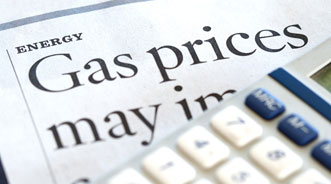ALG Gauges Impact of Gas Prices, Exchange Rate on Canadian Residuals

Canadian fuel costs are expected to continue rising for the next few years and the U.S.-Canada exchange rate is projected to hover near parity for “the foreseeable future,” according to the latest Industry Report shared by ALG Canada. The report offered the company’s take on how these factors will impact Canadian residual/resale values.
Specifically, the firm believes that escalating fuel prices tend to have an overall negative impact, with more fuel-friendly cars being affected positively and larger cars seeing a downturn.
As far as the exchange rate, the residual/resale effects are likely to be “more neutral.”
ALG Canada broke down its analysis further into these factors, starting first with gas-price trends and expectations.
The firm noted that crude oil prices hit $112 (USD) a barrel in April, up more than 25 percent from where it was in February. The spike is due mostly to the dicey situations in several oil-producing nations and burgeoning demand for oil throughout the globe, ALG said.
The firm is projecting $1.09 (CAD)/liter gas for 2011, followed by $1.18 next year. Gas prices are likely to jump another $0.07 per liter in 2013, continue to climb the following two years and hit $1.37 per liter in 2016, ALG’s data indicates.
“Recently, the relationship between oil and gas prices has changed. In the past, oil and gas prices maintained a steady trend in which the rates of change were comparable,” the firm noted.
“Currently, however, gas prices are increasing at a much higher rate than oil prices,” it continued. “ALG believes oil prices will increase given rising world demand and has also adjusted the gas price forecasts to account for current crude oil fluctuations.”
ALG emphasized that new- and used-vehicle pricing is impacted by fuel prices and shared its perspective in that regard.
“In general, as gas prices increase, larger cars will experience a negative impact while smaller and more gas efficient cars experience a positive impact in terms of residual/resale values,” ALG stated. “Yet the overall effect on the market is slightly negative across the industry as buyers have generally less disposable income available because of higher gas prices.”
Moving on to discuss the exchange rate dynamics, ALG explained some of the factors that affect how the U.S.-Canadian dollar comparison shakes out.
One of those is the “relative strength” of the two respective economies. The U.S., for instance, took a stronger blow from the recession than Canada, which was impacted but not to the same degree.
The annualized growth rate for the Canadian GDP in the first quarter is likely to come in at 3.5 percent to 3.8 percent. Comparatively, the U.S. came in at 1.8 percent.
ALG also delved into the export-import dynamic between the U.S. and Canada, which also plays a role in the exchange rate.
“The United States and Canada make up the world’s largest trading partnership. Each year, Canada exports many of their natural resources to the U.S, including oil,” the firm explained. “Canada exports approximately 2 to 2.5 million barrels per day of oil to the U.S; due to this large magnitude of sales, a change in the price of oil directly influences the exchange rates between the U.S. and Canada.”
ALG added that taking its predictions for oil and gas prices into consideration, parity will rein for “the foreseeable future.”
How, then, does the exchange rate impact the residual market? ALG suggested it is “indirect.”
Typically, U.S. dealers don’t have as much motivation to come northwards for cars when the value of the Canadian dollar goes up. Additionally, the massive oil exports Canada makes to U.S. brings in a lot of American dollars to the Canadian market, the firm explained.
As such, Canadian dollars are in greater demand.
ALG said, “This will strengthen the Canadian dollar versus the U.S. dollar as long as no other changes take place. Hence, with an expected upward trend in U.S. crude oil consumption in years to come, the downward pressure on the U.S. dollar will remain.”
It added: “However, other factors are impacting the (U.S.-Canadian) exchange rate as well (for example, economic performance, interest rate differentials, commodity prices of precious metals, etc.).
“ALG’s current outlook foresees the U.S./Canadian exchange rate to be at parity for the next few years with a more neutral impact on residual/resale values,” the firm noted.

 View The Latest Edition
View The Latest Edition

